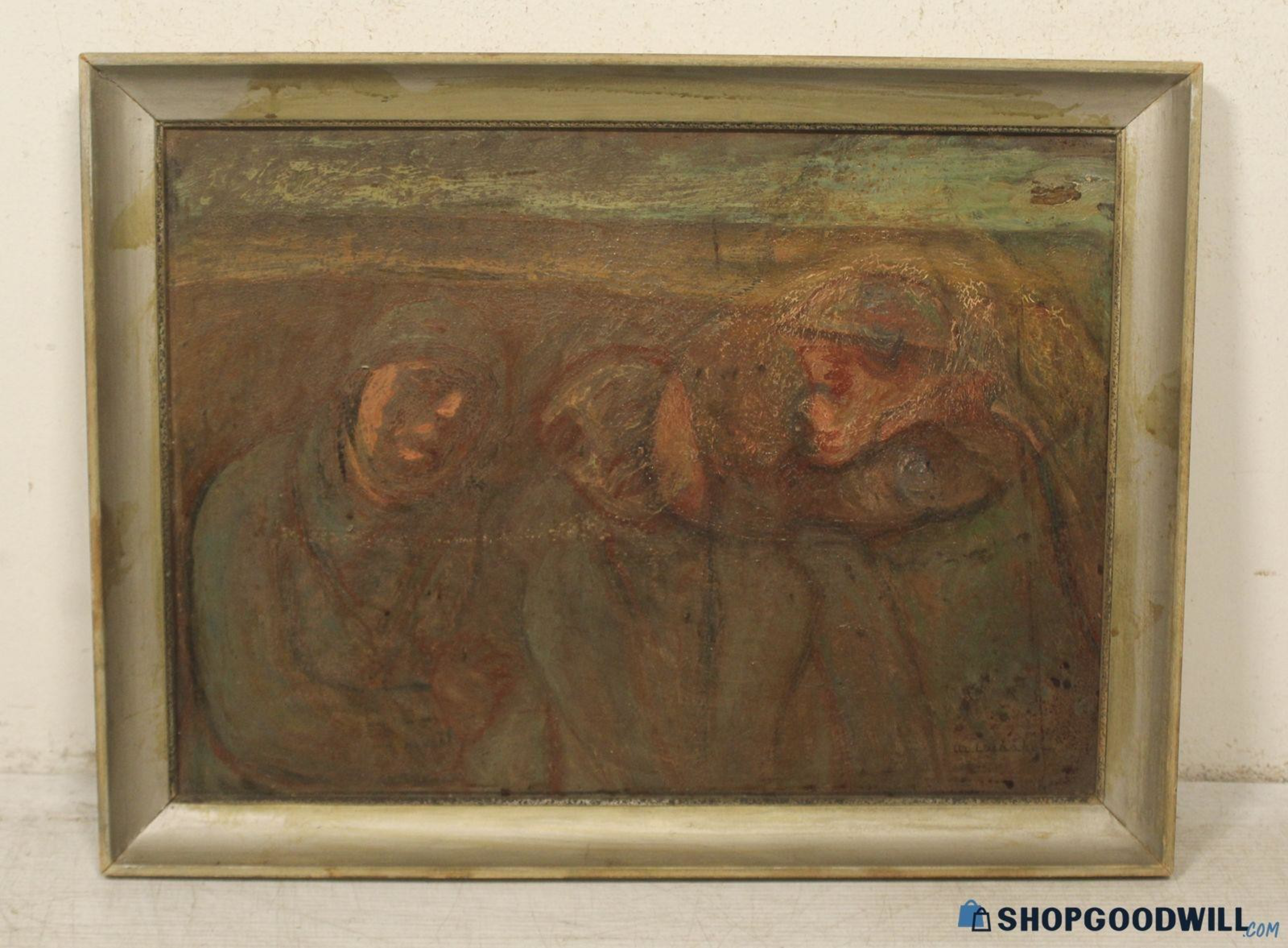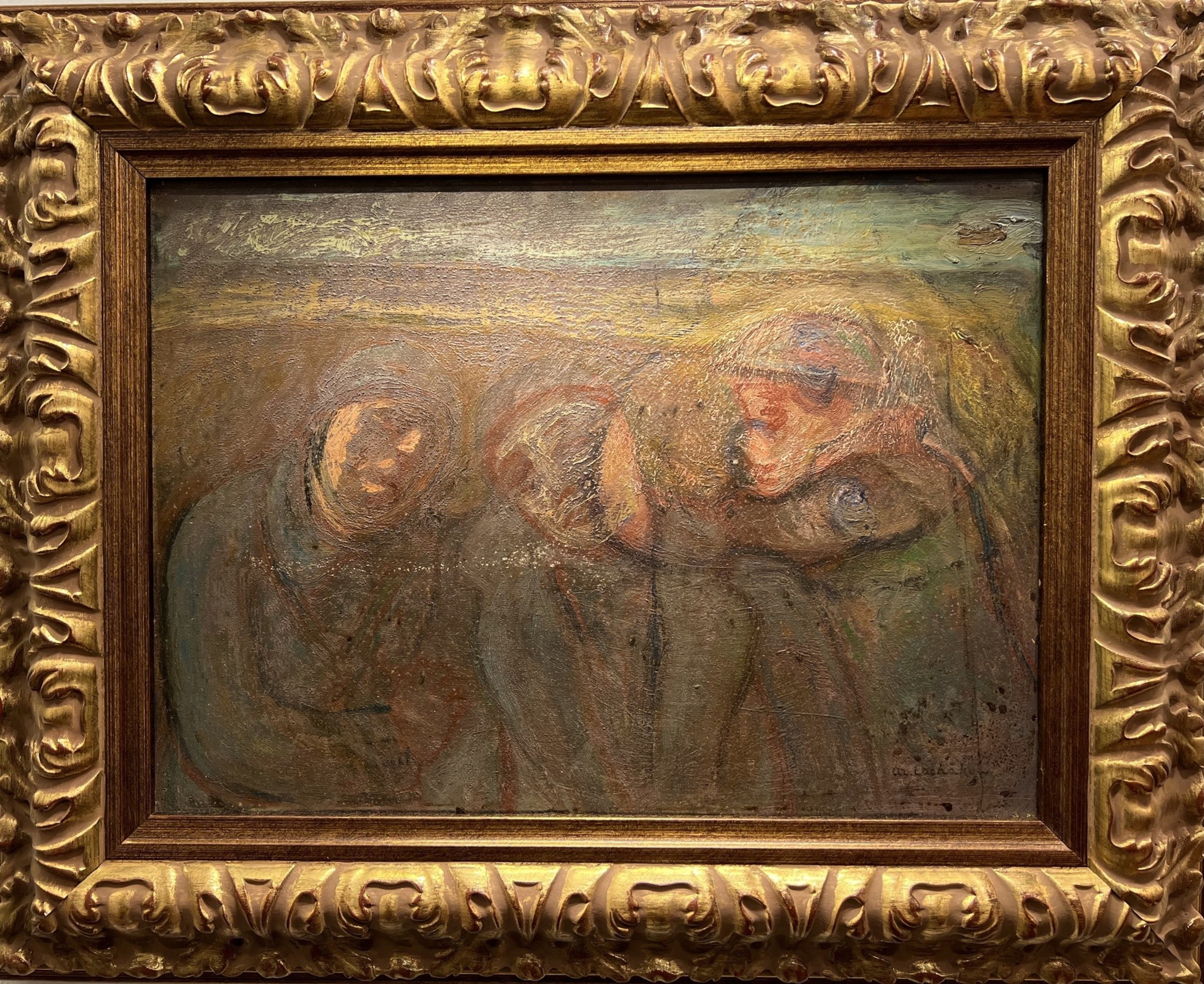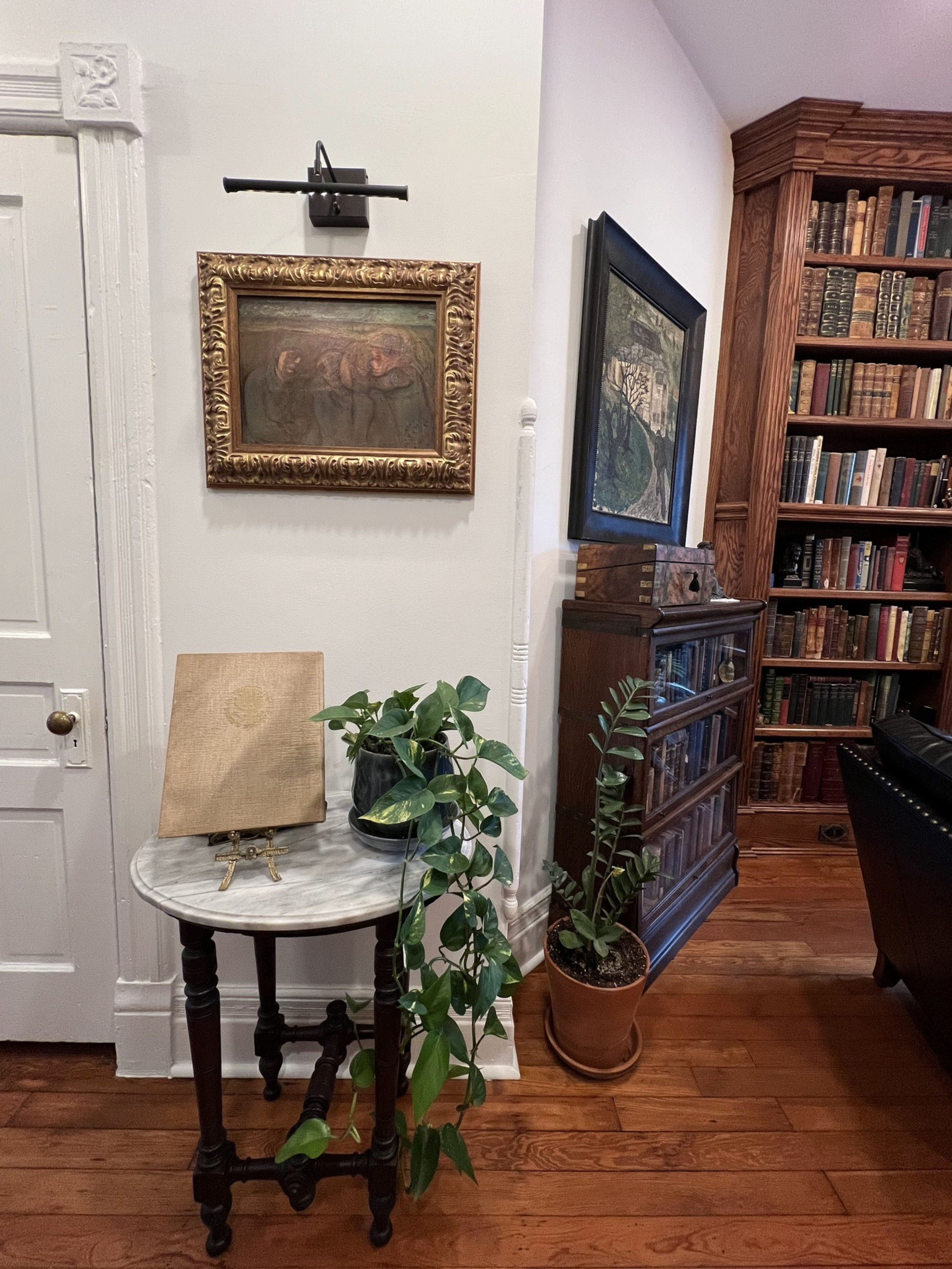It’s one of San Francisco’s great art mysteries—how did 38 artworks by a Jewish artist from the famed School of Paris end up on a park bench halfway around the world, more than 80 years after their creator died in the Holocaust?
The Standard was the first to break the story about an unlikely trove of artworks discovered in Crane Cove Park in 2022, tracing a line from their creation in Paris to a framing shop Huntsville, Alabama, to their ultimate resting place in San Francisco—a path that traveled through the artist Ary Arcadie Lochakov’s extended family ties.
But there’s a new chapter in this continuously unfolding story, one that raises even more questions about the artworks’ posthumous journey. One month before Lochakov’s pieces appeared on a cement bench in the Dogpatch, a professor and art hunter in Washington, D.C., secured his own Lochakov painting—this one purchased online via a Goodwill store in South San Francisco.

Donald Kochan, a law professor at George Mason University, has been bidding for art at shopgoodwill.com along with his wife Jennifer Kochan since 2019. The couple has decorated their entire Washington, D.C., row house with art they’ve found on the auction site, where it’s possible to search by an individual store or across the country.
(The website—which is not to be confused with goodwillfinds.com, a newer site that has fixed prices and fewer bargains—operates a bit like EBay. You bid on items online, with the highest bid winning the auction. It’s a way for the longtime secondhand purveyor Goodwill to make more money for choice items than it could on its stores’ shelves. Many pieces of fine art start at just $9.99.)
In April 2022, Kochan was struck by a painting he saw on the site, enchanted by its ghostly figures and haunting landscape. “We’re big fans of the Paris School and impressionism,” he said. “And this reminded me of that.”
The work’s description read: “Vintage oil on wood three figures expressionism signed AZ Lachakaw.” Kochan came in late with a high bid, scoring the piece for $597.26. The artwork shipped from the Goodwill in South San Francisco to Kochan’s home in Washington, D.C.
Once the painting arrived, Kochan saw it had “Ar. Lochakow” painted on the back as well as a label from the framing company Campbell Wall Paper Co. in Huntsville, Alabama—the same identifying markers found on many of the pieces discovered by Port of San Francisco workers in the Crane Cove Park haul.

The name on the back prompted Kochan to embark on a research journey similar to the one undertaken by Port employee Arianna Cunha, who was the first person to identify the pieces in the abandoned trove as Lochakov’s.
When Kochan first searched online in 2022, there was little information about the artist, aside from a few works held by the Jewish Ghetto Fighters’ House Museum in Israel. But that changed in 2023, with the launch of an exhibition about lost Jewish artists at the Museum of Jewish Art and History in Paris.
Kochan’s academic work focuses on psycho-linguistic framing, or how the words chosen to describe something impact our understanding. He carries his—very theoretical—academic research into the analog world by re-framing art objects, pairing up paintings and vintage frames sourced from different locations.
“You often have good art in bad frames and bad frames with good art,” he said. Matching the two with their more appropriate partners has become a physical manifestation of his academic ideas and one of his life’s passions.

The mystery continues
Kochan’s Lochakov now hangs in a prime location in his home, which is just three blocks from the nation’s Capitol. The artwork’s surfacing at Goodwill—only one month before the careful display of 38 Lochakov pieces appeared on a concrete bench in San Francisco—raises a new set of questions about this haunting art mystery.
Was the person who gave the piece to Goodwill the same one who neatly laid the paintings out for discovery at Crane Cove Park? If so, why donate just one piece to Goodwill and leave the others abandoned a month later? And are there more Lochakov pieces out there, waiting to be discovered?
Attempts to reach the South San Francisco Goodwill outlet did not result in any additional information, and the website does not keep an inventory of previously sold items past 90 days.
The trail of Lochakov’s art through the U.S. began with his late nephew, Michael Lochakov, whose first wife, also deceased, was a woman named Inge Traub. Traub’s niece, Diane Sammons, who died in 2019, lived in San Francisco and worked as a UCSF nurse. Sammons’ longtime partner, John Magri, believes that Lochakov’s artworks were inherited by Sammons after her mother’s death in 2011, as he remembered seeing the pieces in her family home in Huntsville.
Sammons did not have any children. Her next of kin was Randy Cohen, a half-brother who lives in Florida, and whose wife, Gina Cohen, came out to San Francisco to handle Sammons’ estate after her death. What she saw looked like a crime scene: “It was so obvious people had been in there going through all her stuff,” Cohen said. “I only brought back photos.”
According to Cohen, a lot of people were taking advantage of Sammons before she died. Cohen found a neighbor driving her old car and suspected a longtime caretaker—name unknown—may have helped herself to Sammons’ stuff.
Photos of Sammons’ home taken by the real estate agent who listed it for sale, as well as by the haul-away service that cleaned it out, depict messy closets, turned over beds and scattered belongings. In all of the images, there’s not a Lochakov artwork in sight (though a contemporary drawing from Sammons’s condo looks eerily similar to some of Lochakov’s portraits).
Perhaps whoever pillaged Sammons’ belongings suffered a guilty conscience and, in 2022, began the process of offering the pieces back to the universe. Of this, we may never know.
A local exhibition of the artworks discovered in San Francisco will take place before they are transferred to the Museum of Jewish Art and History in Paris, but the Port of San Francisco has yet to set a date for a public display.

The Lochakov painting purchased by Kochan depicts three figures, one whose head is floating horizontally like a ghost. Kochan didn’t see the figure at first, as it was somewhat hidden by layers of paint—but now it’s all he can see. One easily imagines it as Lochakov’s ghost, at first invisible, then stubbornly persistent.
While recent attention (opens in new tab) to Lochakov’s story and art may increase the value of his artworks, Kochan and his wife aren’t interested in flipping their art finds. Often, when he purchases a piece from Goodwill or other auction sites, Kochan will actively search for family members of the artists and include correspondence with them and other materials behind the frames of the works so they are kept with the painting for posterity.
For Kochan, the search—and the finds—fulfill a deep-seated desire.
“Hopefully, it will help it live on past us,” he said.
